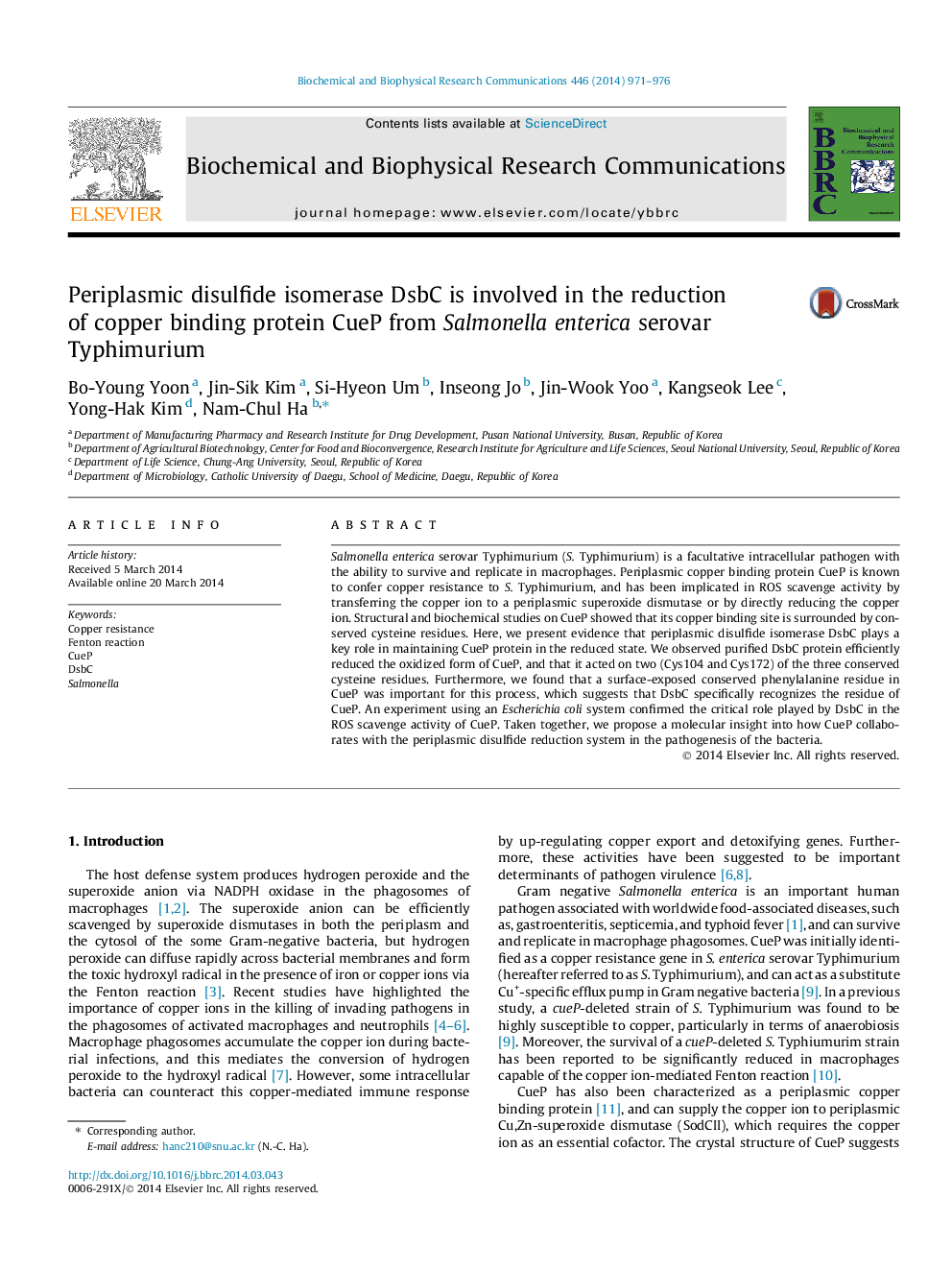| کد مقاله | کد نشریه | سال انتشار | مقاله انگلیسی | نسخه تمام متن |
|---|---|---|---|---|
| 10755607 | 1050376 | 2014 | 6 صفحه PDF | دانلود رایگان |
عنوان انگلیسی مقاله ISI
Periplasmic disulfide isomerase DsbC is involved in the reduction of copper binding protein CueP from Salmonella enterica serovar Typhimurium
دانلود مقاله + سفارش ترجمه
دانلود مقاله ISI انگلیسی
رایگان برای ایرانیان
موضوعات مرتبط
علوم زیستی و بیوفناوری
بیوشیمی، ژنتیک و زیست شناسی مولکولی
زیست شیمی
پیش نمایش صفحه اول مقاله

چکیده انگلیسی
Salmonella enterica serovar Typhimurium (S. Typhimurium) is a facultative intracellular pathogen with the ability to survive and replicate in macrophages. Periplasmic copper binding protein CueP is known to confer copper resistance to S. Typhimurium, and has been implicated in ROS scavenge activity by transferring the copper ion to a periplasmic superoxide dismutase or by directly reducing the copper ion. Structural and biochemical studies on CueP showed that its copper binding site is surrounded by conserved cysteine residues. Here, we present evidence that periplasmic disulfide isomerase DsbC plays a key role in maintaining CueP protein in the reduced state. We observed purified DsbC protein efficiently reduced the oxidized form of CueP, and that it acted on two (Cys104 and Cys172) of the three conserved cysteine residues. Furthermore, we found that a surface-exposed conserved phenylalanine residue in CueP was important for this process, which suggests that DsbC specifically recognizes the residue of CueP. An experiment using an Escherichia coli system confirmed the critical role played by DsbC in the ROS scavenge activity of CueP. Taken together, we propose a molecular insight into how CueP collaborates with the periplasmic disulfide reduction system in the pathogenesis of the bacteria.
ناشر
Database: Elsevier - ScienceDirect (ساینس دایرکت)
Journal: Biochemical and Biophysical Research Communications - Volume 446, Issue 4, 18 April 2014, Pages 971-976
Journal: Biochemical and Biophysical Research Communications - Volume 446, Issue 4, 18 April 2014, Pages 971-976
نویسندگان
Bo-Young Yoon, Jin-Sik Kim, Si-Hyeon Um, Inseong Jo, Jin-Wook Yoo, Kangseok Lee, Yong-Hak Kim, Nam-Chul Ha,